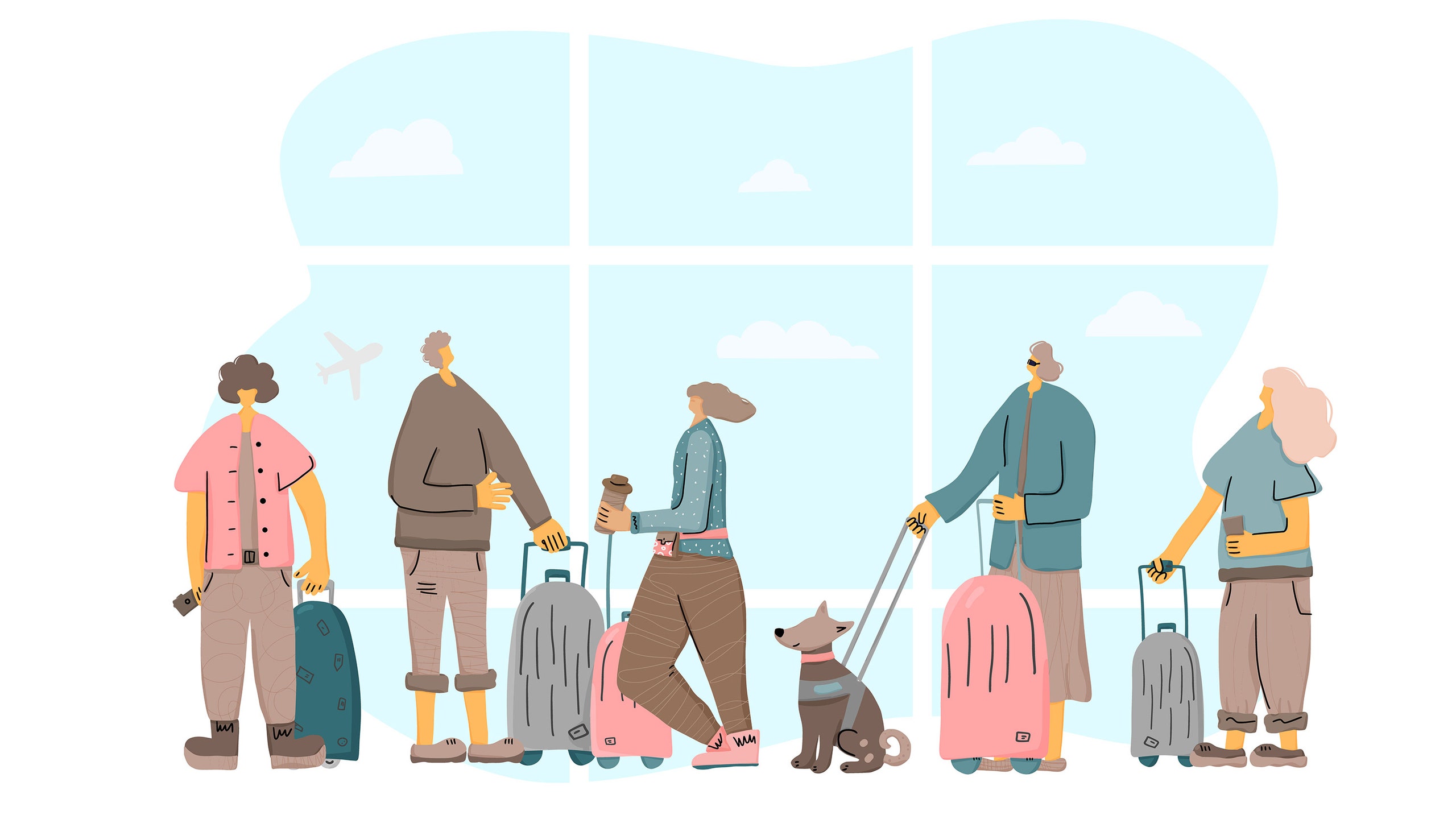Flying with a Guide Dog: Everything You Need to Know
Lucy Edwards talks us through everything you need to know about flying with a guide dog.
Most people have, at some time or other, come across a blind person with a guide dog in a shop, restaurant, or on a train. However, guide dogs on planes are far less common. As a guide dog handler with over nine years of experience, I’ve learned all about the benefits that guide dogs can provide over other mobility aids. My guide dog gives me a lot of freedom; canes are great for identifying obstacles, but a guide dog is an obstacle-avoider. Just this distinction makes traveling feel like so much less of a chore.
Understanding Guide Dog Training for Air Travel
Guide Dogs for the Blind UK has specific guidance and rules when flying with your assistance dog. I underwent specialized training with a guide dog mobility instructor who accompanied me and my guide dog Molly on a flight to Edinburgh and back. The purpose was to ensure that both of us were comfortable during the journey. This training involves acclimating your dog to various unfamiliar environments, breaking routines, introducing new climates, and trialing different noises. My instructor demonstrated how to properly fit a Julius-K9 harness and secure her in an empty seat, as some airlines assign seats to ensure the dog has enough space.
Preparing Your Guide Dog for Flights
During takeoff, I provide Molly with a smoky bone to chew to alleviate any discomfort from elevation changes. Once in the air, cabin crew members typically inquire if she needs water, and I always ensure that I have food and treats on hand. I also arrange for food to be delivered to our hotel upon arrival and carry vegetarian treats in case import restrictions apply. Feeding Molly a small meal at least 12 hours before a short flight helps manage her bathroom needs. While consulting your instructor and resources from Guide Dogs UK is advisable, many dog’s practices like using puppy pads on planes may be beneficial. My personal experience suggests that flights of around four to five hours are manageable, but for anything longer, I’d consider leaving her at home with family. Adequate preparation is crucial; roadblocks can occur, so conducting thorough research is essential, including understanding your rights as a disabled person traveling with a guide dog.
Current Regulations for Flying with Guide Dogs
Before your flight, it’s important to gather all necessary paperwork. This includes your dog’s International Guide Dog Federation (IDGF) accreditation, a valid passport, and any medical documentation required for yourself. If traveling outside the UK, secure a valid animal health certificate. Post-Brexit, guide dog owners must schedule a vet check-up and obtain a new certificate for each trip. This document expires after five days, which may necessitate a vet visit in the country you’re visiting if it expires during your stay.
The Best Airlines for Traveling with Guide Dogs
I personally prefer flying with British Airways or EasyJet. These airlines have developed guidelines on the mandatory use of dog restraining harnesses in the cabin, cooperating closely with Airlines UK and Guide Dogs UK. The Civil Aviation Authority states that airlines must accept all assistance dogs for air travel without charge. If you’re flying to the USA, similar regulations are in place. Therefore, it’s wise to research which airlines are registered in each country to understand your rights and what to expect during your flight. Some airlines, unfortunately, do not guarantee extra seats for guide dogs and may enforce muzzling practices.
Challenges of Traveling with Guide Dogs
Despite my experience, I often feel anxious when flying with airlines I haven’t used before. Crew members usually orient me with the plane’s amenities, but there have been instances where I wasn’t informed about how to manage my guide dog in emergencies. Additionally, not all airports provide designated areas for guide dogs past security, so I often request assistance from airport staff to access appropriate areas and frequently face resistance. For example, I was once informed that someone would take my dog out for a bathroom break without allowing me to accompany her, and I declined. This highlights a pressing need for airlines and airports to enhance their support for visually impaired travelers using guide dogs.
Many airline staff have informed me that my dog is the first they have ever seen travel in the cabin. This indicates a broader issue where potential barriers need addressing. My advice is to conduct thorough research, and don’t hesitate to reach out to Guide Dogs UK for any support and guidance you might need before embarking on your journey.




